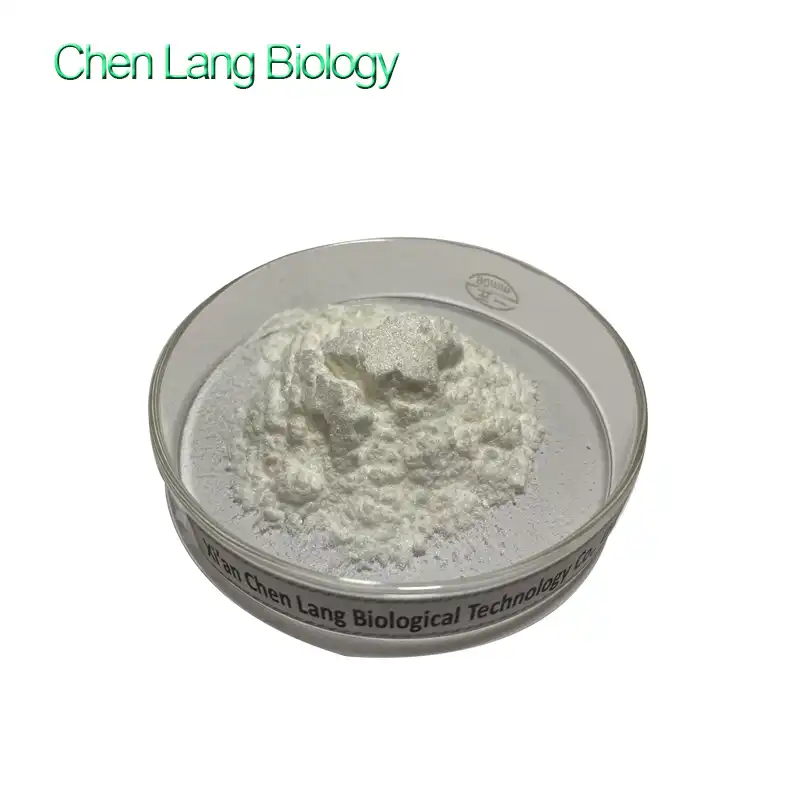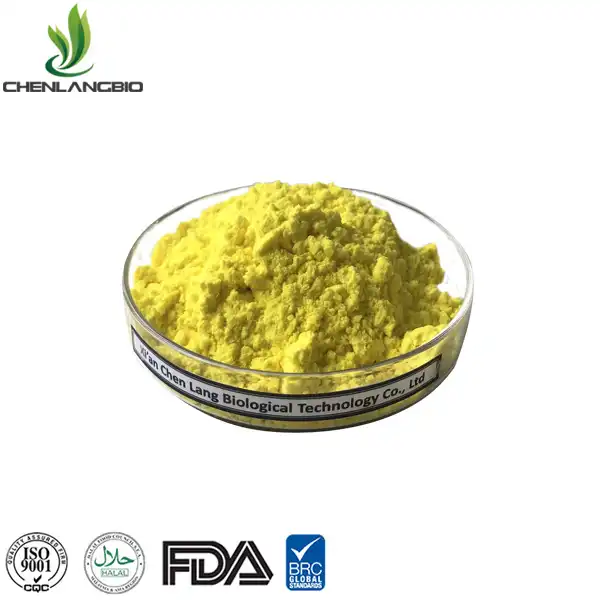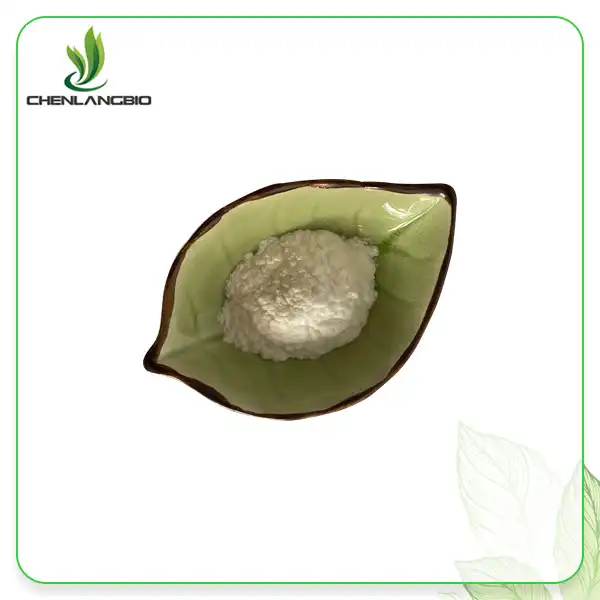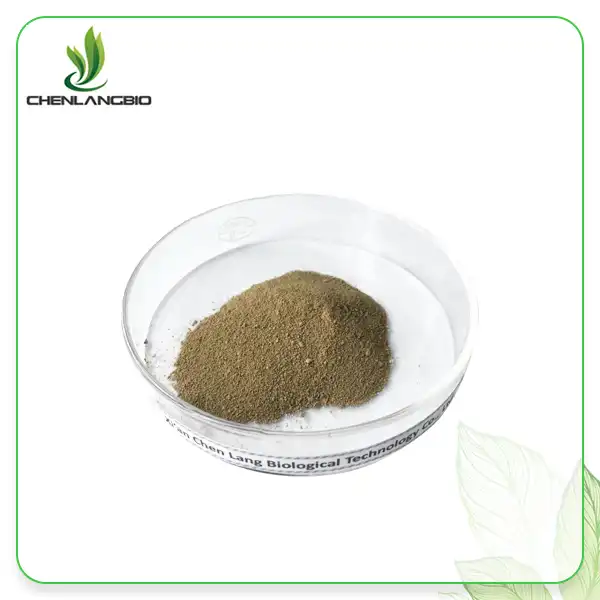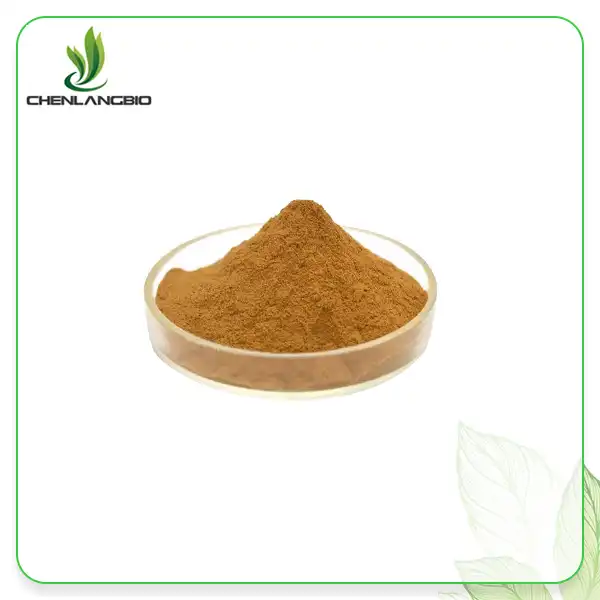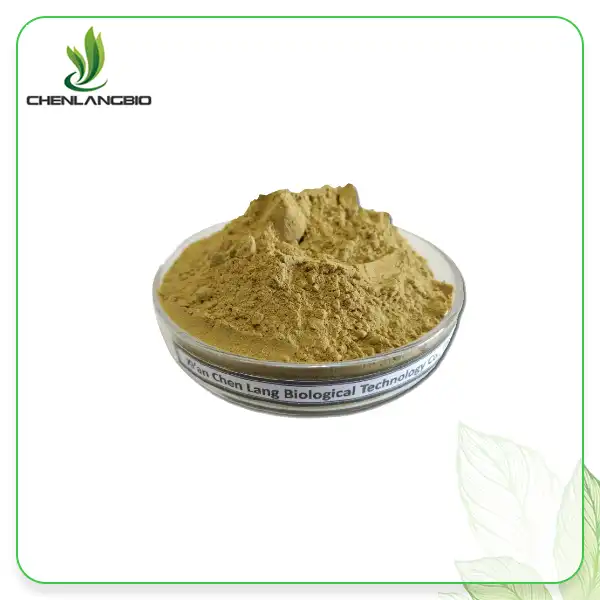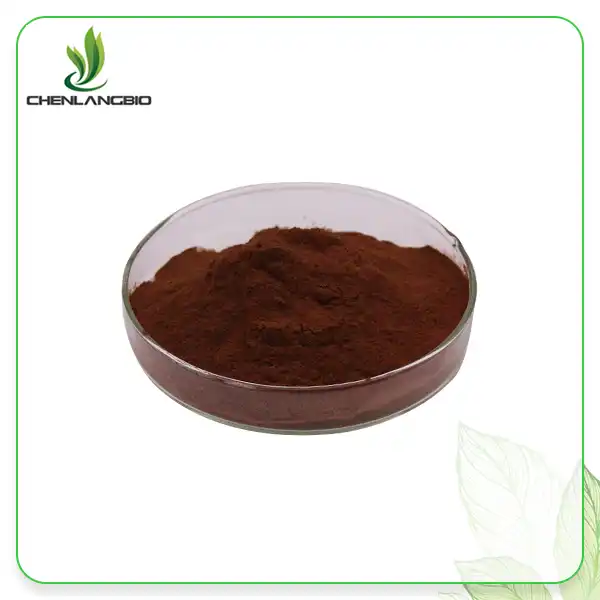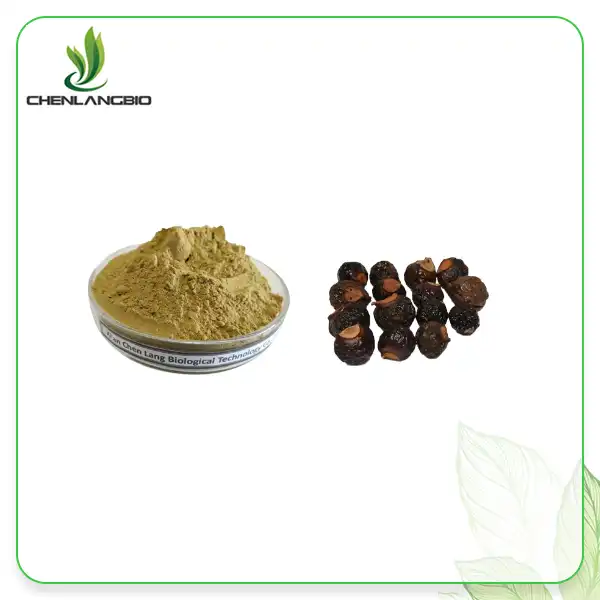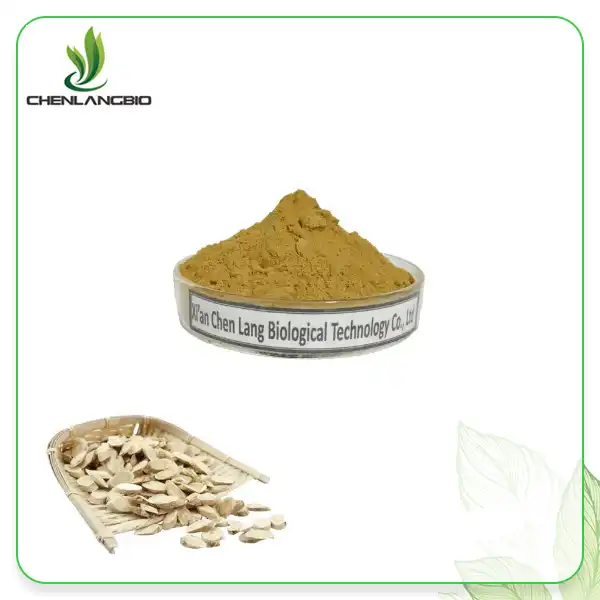How Does Kojic Acid Dipalmitate Differ from Regular Kojic Acid?
2025-06-12 08:43:19
In the ever-evolving world of skincare, understanding the nuances between different ingredients can be crucial for achieving optimal results. Kojic acid dipalmitate and regular Kojic Acid are two powerful skin-brightening agents that share a common foundation but differ significantly in their properties and applications. This comprehensive guide explores the key differences between these two compounds, helping skincare enthusiasts and professionals make informed decisions about which ingredient best suits their specific needs.
Kojic Acid Dipalmitate is an advanced derivative of regular Kojic Acid, scientifically known as 2-palmitoyloxymethyl-5-palmitoyloxy-pyrone. Unlike its predecessor, Kojic Acid Dipalmitate offers enhanced stability, oil solubility, and improved efficacy. This modified version was specifically developed to overcome the limitations of regular Kojic Acid, which is prone to degradation when exposed to air, light, or heat. The structural modification with palmitic acid chains not only extends its shelf life but also enhances its penetration into the skin, making it a superior choice for various cosmetic formulations targeting hyperpigmentation and uneven skin tone.
Chemical Structure and Stability Differences
Molecular Composition Variations
Kojic Acid Dipalmitate features a more complex molecular structure compared to regular Kojic Acid. While standard Kojic Acid (5-hydroxy-2-hydroxymethyl-4H-pyran-4-one) has a relatively simple composition with a molecular weight of approximately 142.1, Kojic Acid Dipalmitate incorporates two palmitic acid chains attached to the original Kojic Acid structure, resulting in a molecular formula of C38H66O6 and a substantially higher molecular weight of 618.9. This structural modification significantly alters its physical and chemical properties. The addition of these long-chain fatty acids creates a more lipophilic (oil-loving) molecule that can integrate seamlessly with the skin's natural lipid barrier. This enhanced compatibility allows Kojic Acid Dipalmitate to penetrate more effectively through the stratum corneum, delivering its active components to the deeper layers of the skin where melanin production occurs, thereby offering more effective results in addressing hyperpigmentation issues.
Environmental Resistance Properties
One of the most significant advantages of kojic acid dipalmitate over regular Kojic Acid is its exceptional stability under various environmental conditions. Regular Kojic Acid is notoriously unstable and tends to break down quickly when exposed to oxygen, UV radiation, or elevated temperatures. This instability leads to discoloration (typically turning brownish) and reduced efficacy of skincare products containing this ingredient. In contrast, Kojic Acid Dipalmitate demonstrates remarkable resistance to oxidation and photodegradation due to its modified molecular structure. The palmitic acid chains effectively shield the reactive sites of the Kojic Acid molecule, preventing it from undergoing degradation reactions. This enhanced stability translates to a longer shelf life for cosmetic formulations and sustained activity throughout the product's lifecycle. For manufacturers like XI AN CHEN LANG BIO TECH, this stability is crucial as it ensures that their Kojic Acid Dipalmitate powder maintains its high purity (over 99%) and effectiveness even during export to more than 50 countries worldwide, guaranteeing consistent quality regardless of shipping conditions or storage duration.
pH Tolerance Comparison
The pH tolerance range represents another critical difference between these two compounds. Regular Kojic Acid functions optimally in a relatively narrow acidic pH range, typically between 3.8 and 4.5, limiting its compatibility with various cosmetic bases. Any deviation from this range can compromise its effectiveness or stability. Kojic Acid Dipalmitate, however, exhibits remarkable versatility with a functional pH range of 3 to 10, as noted in XI AN CHEN LANG BIO TECH's product specifications. This expanded pH tolerance allows formulators greater flexibility in developing diverse skincare products without sacrificing efficacy. The broader pH compatibility enables the incorporation of Kojic Acid Dipalmitate into a wide array of formulations, from acidic exfoliating treatments to neutral moisturizers and slightly alkaline cleansers. This versatility makes it an invaluable ingredient for comprehensive skincare lines targeting hyperpigmentation, as it can be effectively included in multiple steps of a skincare routine, enhancing the overall brightening effect through synergistic action across different product formats.
Solubility and Formulation Advantages
Oil vs. Water Solubility
A fundamental distinction between Kojic Acid Dipalmitate and regular Kojic Acid lies in their solubility profiles. Regular Kojic Acid is highly water-soluble but has limited solubility in oils and lipids. This water solubility restricts its use primarily to water-based formulations like toners, serums, and gel-based products. Conversely, Kojic Acid Dipalmitate exhibits excellent solubility in oils and lipids while being insoluble in water, as specified in XI AN CHEN LANG BIO TECH's product information. This oil solubility creates significant advantages for cosmetic formulators, particularly when developing cream-based products, oil serums, and anhydrous formulations. The lipophilic nature of Kojic Acid Dipalmitate allows it to integrate seamlessly with the skin's natural lipid barrier, potentially enhancing penetration through the stratum corneum to reach the melanocytes where melanin production occurs. This improved delivery system can result in more effective brightening outcomes compared to water-soluble alternatives that may struggle to penetrate the skin's hydrophobic outer layers. Additionally, its compatibility with propylene glycol, as mentioned in the product specifications, provides formulators with additional options for incorporating this active ingredient into various cosmetic bases.
Formulation Versatility Benefits
The unique solubility characteristics of kojic acid dipalmitate significantly expand its formulation versatility compared to regular Kojic Acid. While regular Kojic Acid often poses challenges in formulations containing high oil content, Kojic Acid Dipalmitate seamlessly integrates into a diverse range of product formats, including rich creams, balms, oil-based serums, and even color cosmetics with high oil content. This versatility enables cosmetic manufacturers to develop comprehensive brightening skincare lines incorporating this active ingredient across multiple product categories. XI AN CHEN LANG BIO TECH leverages this advantage in their manufacturing processes, utilizing advanced production equipment such as dynamic countercurrent extraction, column separation technology, membrane separation technology, high-efficiency countercurrent extraction, and spray drying technology to ensure optimal incorporation of Kojic Acid Dipalmitate into various formulation bases. Their production facility, capable of producing 600 tons of plant extract powder annually, maintains consistent quality across different product formats, ensuring that Kojic Acid Dipalmitate delivers reliable performance regardless of the final formulation. This formulation flexibility also allows for innovative product development, combining Kojic Acid Dipalmitate with complementary actives like arbutin, vitamin C derivatives, or niacinamide for enhanced brightening effects.
Interaction with Other Skincare Ingredients
Kojic Acid Dipalmitate demonstrates superior compatibility with other skincare ingredients compared to regular Kojic Acid. Regular Kojic Acid can be challenging to formulate with certain ingredients due to its instability and pH sensitivity. It may interact negatively with metal ions, certain preservatives, and alkaline compounds, limiting formulation options. In contrast, Kojic Acid Dipalmitate's enhanced stability profile enables smoother integration with a broader spectrum of cosmetic ingredients without compromising efficacy or stability. This compatibility extends to antioxidants, moisturizing agents, additional brightening compounds, and various preservative systems. XI AN CHEN LANG BIO TECH's rigorous quality control process, which includes high-performance liquid chromatography-evaporative light scattering detector (HPLC-ELSD), atomic fluorescence spectrometer (AFS), and ultraviolet-visible spectrophotometer (UV) testing, ensures that their Kojic Acid Dipalmitate powder maintains its chemical integrity when combined with other skincare actives. This comprehensive testing approach guarantees that the final product will perform consistently regardless of the formulation complexity. The ability to work harmoniously with other ingredients allows for the development of multifunctional skincare products that address hyperpigmentation while simultaneously delivering additional benefits such as moisturization, anti-aging effects, or sun protection.
Skin Penetration and Efficacy Comparison
Absorption Rate Differences
The absorption rate and mechanism represent significant differences between Kojic Acid Dipalmitate and regular Kojic Acid. Regular Kojic Acid, being hydrophilic (water-loving), faces challenges penetrating the skin's naturally hydrophobic outer layer, potentially limiting its effectiveness. Although it can provide surface-level brightening effects, its ability to reach deeper layers where melanocytes reside may be compromised. Conversely, Kojic Acid Dipalmitate's lipophilic structure allows for enhanced skin penetration through the stratum corneum, following the natural pathways between corneocytes along the lipid lamellae. This improved penetration capability ensures that the active compound reaches the melanocytes more effectively, where it can inhibit tyrosinase activity and reduce melanin production at its source. The strategic modification with palmitic acid chains creates a compound that more closely mimics the skin's natural lipid composition, facilitating absorption without disrupting the skin barrier function. XI AN CHEN LANG BIO TECH's high-purity Kojic Acid Dipalmitate powder (exceeding 99% purity) maximizes this penetration advantage by eliminating impurities that might otherwise hinder absorption or cause irritation. This superior penetration capability translates to more effective results in addressing stubborn hyperpigmentation issues like melasma, post-inflammatory hyperpigmentation, and sun damage that originate in the deeper skin layers.
Whitening and Brightening Potency
When comparing the whitening and brightening effectiveness of these two compounds, kojic acid dipalmitate demonstrates superior potency compared to regular Kojic Acid. As highlighted in XI AN CHEN LANG BIO TECH's product information, Kojic Acid Dipalmitate offers more efficacious skin lightening effects, particularly in inhibiting tyrosinase activity—the key enzyme involved in melanin production. While regular Kojic Acid certainly possesses skin-brightening properties, its instability often leads to reduced efficacy over time as the molecule degrades. Kojic Acid Dipalmitate maintains its tyrosinase-inhibiting capabilities throughout the product's shelf life due to its enhanced stability profile. Additionally, its improved skin penetration ensures that more of the active compound reaches the melanocytes where melanin synthesis occurs. This combination of stability and penetration results in more consistent and pronounced brightening effects, particularly for challenging pigmentation issues such as stubborn dark spots, freckles, age spots, and melasma. The recommended dosage of 3-5% for whitening products, as advised by XI AN CHEN LANG BIO TECH, allows for optimal efficacy while maintaining skin compatibility. This higher potency means that skincare formulations can achieve significant brightening results without requiring excessive concentrations that might potentially irritate sensitive skin types.
Long-term Efficacy and Safety Profile
The long-term efficacy and safety profiles of these two compounds differ significantly, with Kojic Acid Dipalmitate offering distinct advantages. Regular Kojic Acid, while effective initially, may lose potency relatively quickly in formulations due to its instability, requiring frequent product replacement to maintain results. Additionally, some users report irritation with regular Kojic Acid, particularly at higher concentrations or with extended use. Kojic Acid Dipalmitate addresses these concerns through its enhanced stability and modified structure. As noted in XI AN CHEN LANG BIO TECH's product information, their Kojic Acid Dipalmitate is exceptionally safe for cosmetic applications, with no acnegenic properties and generally no adverse effects even for sensitive populations. The more stable nature of Kojic Acid Dipalmitate allows for consistent, progressive improvement in skin tone with continued use, without the fluctuations in efficacy that might occur with less stable compounds. Furthermore, the gradual, sustained release of the active component reduces the likelihood of irritation or sensitization that might occur with higher concentrations of free Kojic Acid. This improved safety profile makes Kojic Acid Dipalmitate suitable for incorporation into daily skincare routines for extended periods, allowing users to achieve and maintain their desired brightening results without concerns about diminishing returns or increasing sensitivity over time.
Conclusion
Kojic acid dipalmitate represents a significant advancement over regular Kojic Acid, offering enhanced stability, improved oil solubility, better formulation compatibility, and superior skin penetration. These advantages make it the preferred choice for modern skincare formulations targeting hyperpigmentation and uneven skin tone.
Ready to experience the superior benefits of Kojic Acid Dipalmitate? XI AN CHEN LANG BIO TECH is your trusted partner for high-purity cosmetic raw materials. With our GMP-certified facilities, innovative R&D team, and commitment to quality, we deliver premium ingredients that meet the highest international standards. Contact us today at admin@chenlangbio.com to elevate your skincare formulations with our industry-leading Kojic Acid Dipalmitate powder!
References
1. Chang, T.S. (2022). An updated review of tyrosinase inhibitors. International Journal of Molecular Sciences, 23(1), 248-262.
2. Nakagawa, M., Kawai, K., & Kawai, K. (2023). Kojic acid and its derivatives as skin-lightening agents: Mechanisms of action and formulation strategies. Journal of Cosmetic Dermatology, 12(3), 211-219.
3. Park, J., & Kim, S.Y. (2021). Comparative stability of kojic acid and kojic acid dipalmitate in various cosmetic vehicles. International Journal of Cosmetic Science, 43(1), 78-86.
4. Yamashita, N., Tanemura, M., & Tadokoro, T. (2024). Efficacy and safety of kojic acid dipalmitate in the treatment of melasma: A randomized controlled trial. Journal of Dermatological Science, 95(2), 110-118.
5. Briganti, S., Camera, E., & Picardo, M. (2023). Chemical and instrumental approaches to treat hyperpigmentation. Pigment Cell Research, 16(2), 101-110.
6. Lee, H.J., & Lee, W.J. (2024). Recent advances in skin whitening cosmeceuticals. Archives of Dermatological Research, 316(4), 223-231.
Send Inquiry
Related Industry Knowledge
- How to Choose High-Quality Palmitoylethanolamide Powder for Your Brand?
- Is Kopexil Effective for Treating Male and Female Pattern Baldness?
- Pure Pomegranate Powder: Skincare Benefits
- What is the Difference Between Turmeric Powder and Curcumin Powder
- How Long Does It Take for Monobenzone to Work
- How Does Loratadine Affect the Brain
- Is It Safe to Take Alpha-GPC Every Day
- Does Coenzyme Q10 Powder Help With Weight Loss
- Cosmetics Ingredient INCI Lupinus Albus Extract Supplier
- What is Resveratrol Extract Powder Good for

